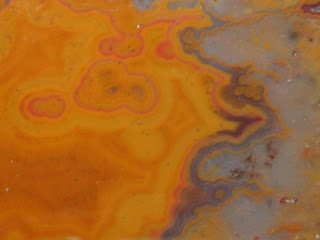Homily of Fr. Paul Panaretos, S.J.
Becoming Absorbed In Jesus
I read a book in my teens, which shaped how I relate to the world. Arthur Koestler’s The Act of Creation marvelously explored how the human mind appreciates and interacts with the world.
Koestler saw humor, art and science as the three interrelated ways humans use their creativity to integrate themselves with the world. The comic “has a touch of aggressiveness,” while the poet/artist is “admiring” and “sympathetic.” The scientist strikes a neutral position, standing “emotionally detached.”/1/
In all activities of creatively working with the world before us, humans apply themselves to it by reshuffling the data as they experience them. Perhaps very young children--certainly infants on their way to learning to crawl and to walk--make this reshuffling plainly visible as we watch their faces glow and eyes glimmer with recognition and discovery at doing something for the first time. The same sort of connections, leading to smiles of satisfaction as well as anguished responses, happen in us throughout our lives.

The tiny child does not tell us she had an insight, and even the loquacious little one shows us his discovery more than describes it. They confirm the conviction that break-throughs happen in images not in words. Insights happen in dreams and in other enhanced moments of awareness.
If we approach scripture in a neutral posture, we gain no insight from it, nor do we allow God to make healing incursions in our lives. Nor can we aggressively make scripture and God measure up to us and succeed: doing that we only frustrate ourselves. When it comes to scripture and to God, the emotional textures to cultivate are admiring awe and an empathy with others, putting ourselves in their skin.
Scriptural encounters with the divine are creative, too, never casual, boring or spiritless. They differ from the everyday in all sorts of ways. We heard Genesis recall the shape of Abram’s experience of God making a covenant with him.
As the sun was about to set, a trance fell upon Abram, and a deep...darkness enveloped him.Abram’s awareness was heightened, not dulled, as God enveloped him. Someone described to me God’s presence in prayer as a fog enfolding him. Words limp, yet images speak for and to us.
Seeing God’s face is one bible image that reaches from its beginning to the bible’s end. The Psalmist’s plea, Hide not your face from me, is ours. We implore what the others before us have and others after us will. God responds to our pleas, visiting us in enhanced moments of awareness. These enhanced moments of awareness capture, even overwhelm us. Think again of a little child’s burst of insight and how the child is overwhelmed by it, and attentive to it.
The three apostles on the mountain with Jesus joined him to pray. Yet they were not attentive to the dazzling glory of the moment. Their awareness was dulled, only awakening fully to the glory as it withdrew from them.

Peter desired to capture the glory--let us make three tents, one for you, one for Moses and one for Elijah--instead of giving himself to it. To try to capture and contain glory is folly. St. Paul urged our wise plan of action: allow divine power to change our lowly bod[ies] to conform with [Christ’s] glorified body. That is Lent’s purpose, after all, to help us do that more freely.
We allow glory to transform us to be more like Christ’s glorified body, both personally and as his church, by cultivating grateful wonder at what Jesus accomplishes in us each moment. We do this when we approach life with an “admiring” and “sympathetic” attitude toward creation, instead of a grasping, controlling one.
Enter your daily 15 minutes with Jesus this week by being aware of the Divine Persons of the Trinity lovingly smiling on you. Ask Mary to present you to Jesus so that you may be in his presence. Ask for the grace of deep feeling to permeate your prayer. Allow yourself to become absorbed in the person of Jesus, who invites you to him as his dear companion. Respond to Jesus with “an exclamation of wonder with surging emotion”/2/. Resolve to allow the grace of deep feeling and surging emotion to shape the way you respond to everyone and everything. Close by slowly saying the Lord’s Prayer to make you more susceptible to Christ’s glorified body and to allow his glory to shine through you.
_________________
/1/ Arthur Koestler. Act of Creation. London: Hutchinson & Co., 1964; Penguin, 1990, p. 27 The frontispiece alerted me to the author’s project and guided me through it often. Images are powerful!
/2/ St. Ignatius of Loyola. Spiritual Exercises, 60, translated by George E. Ganss, S.J., 1992.
_______________________________________________________________
Photo by oldbones used with Creative Commons Attribution-NonCommercial-NoDerivs 2.0. Photo of Transfiguration is in the public domain.
No comments:
Post a Comment